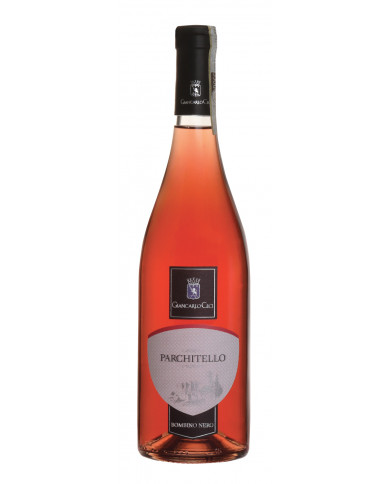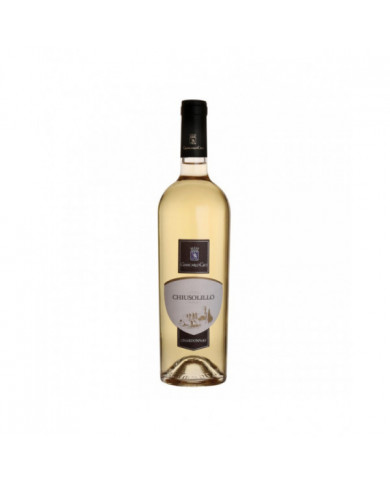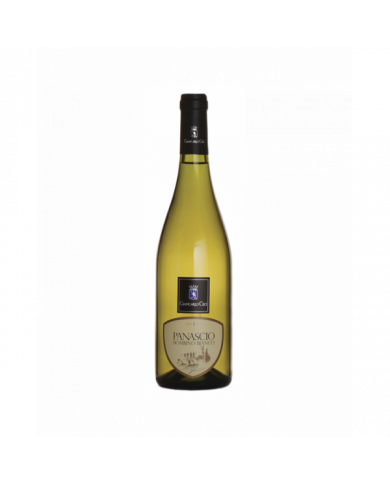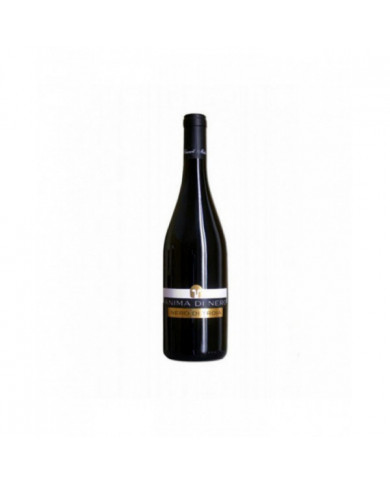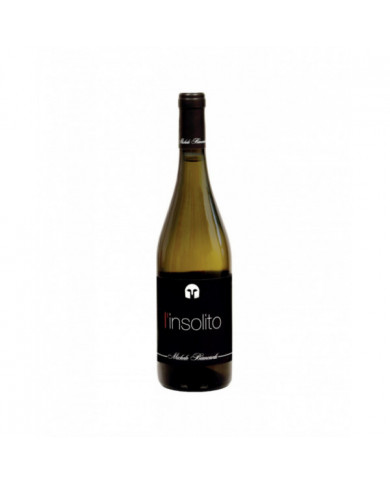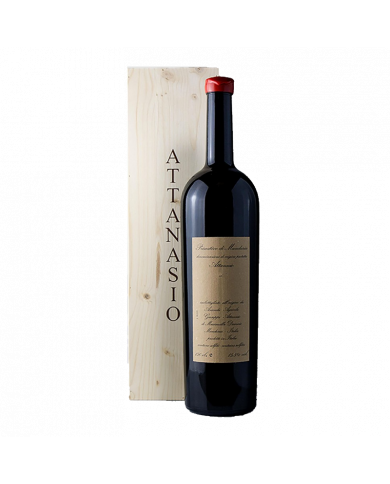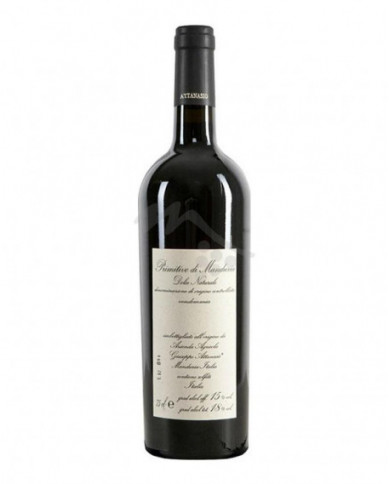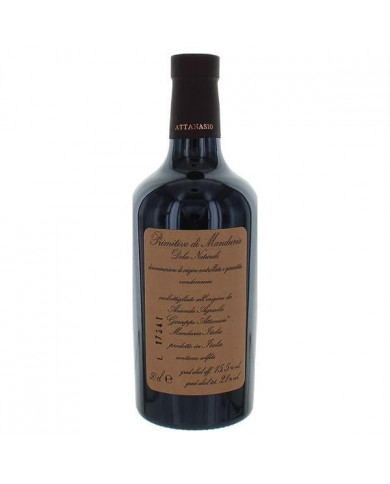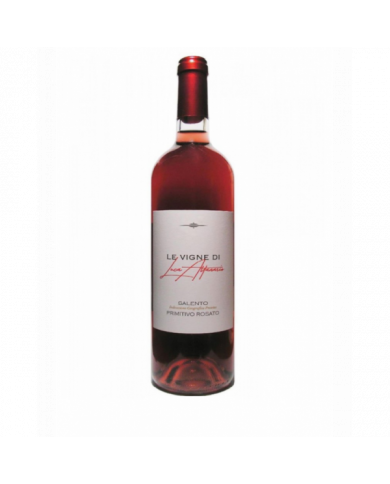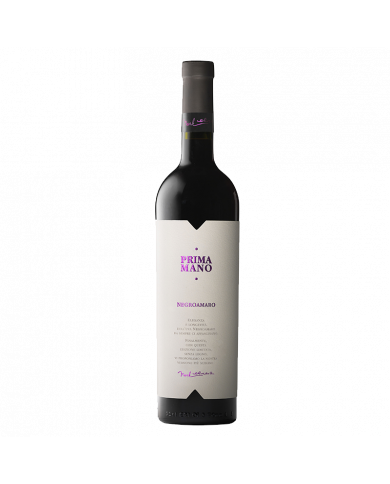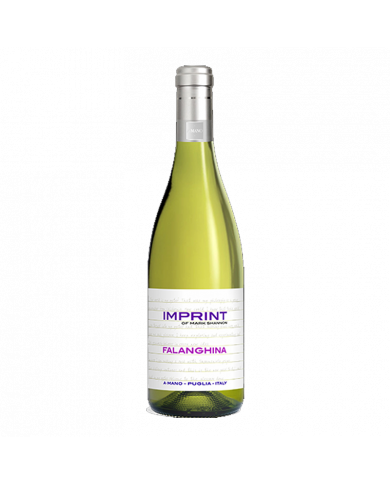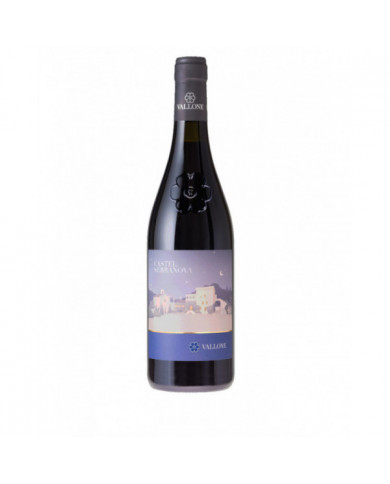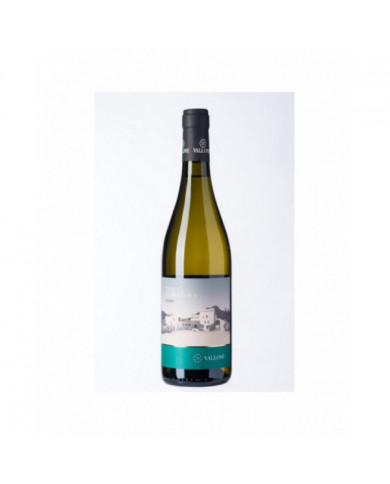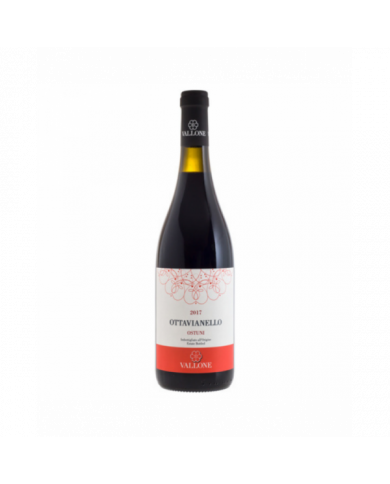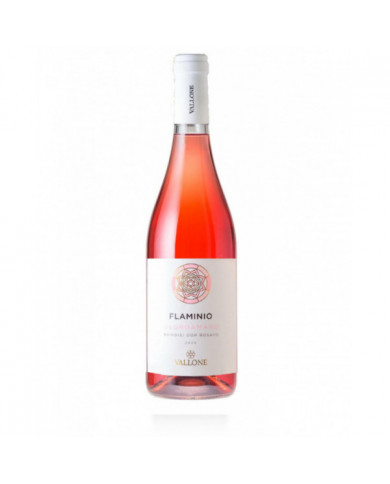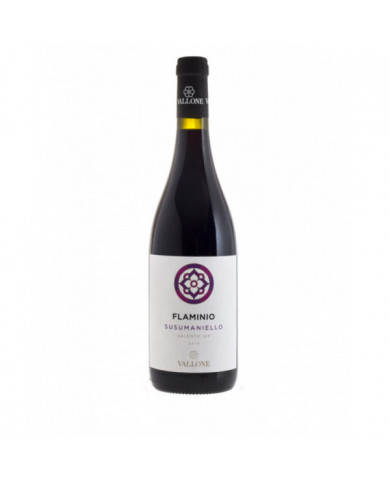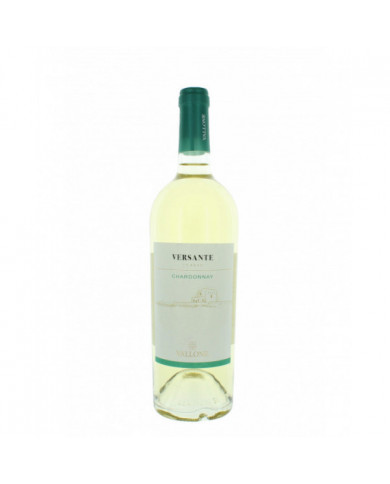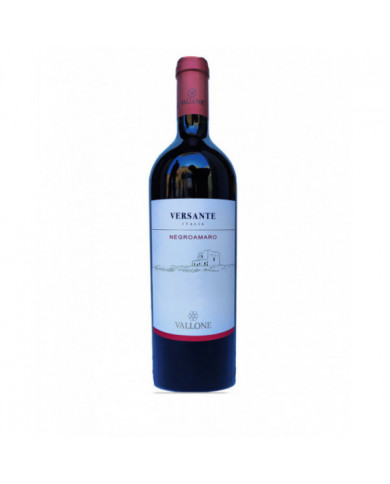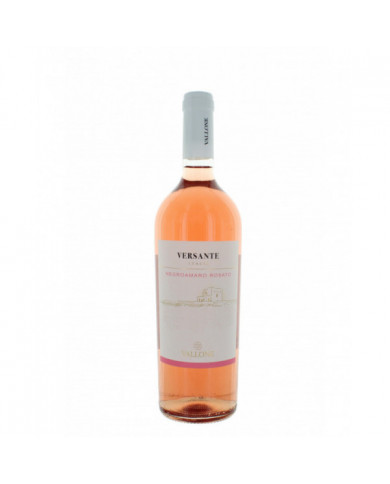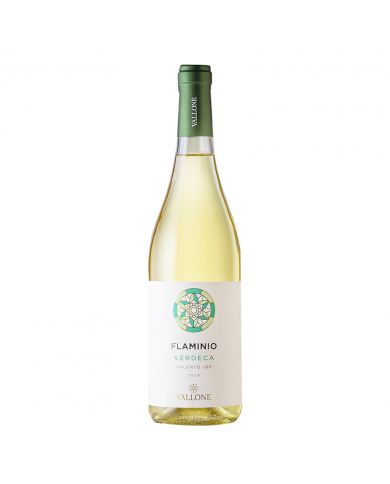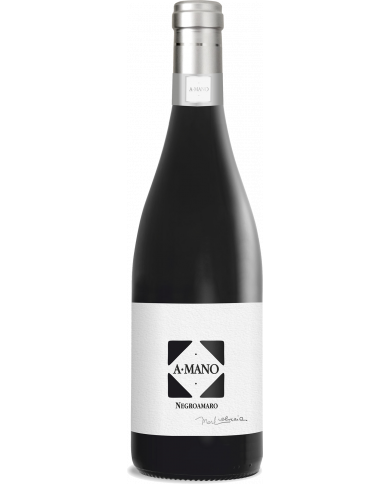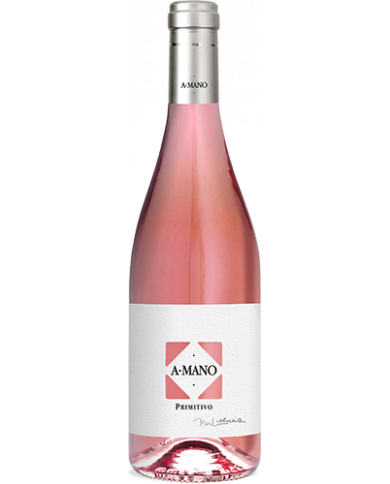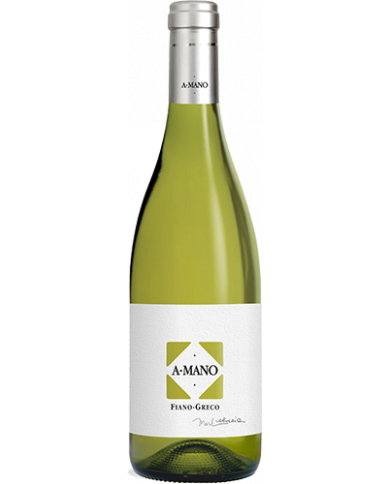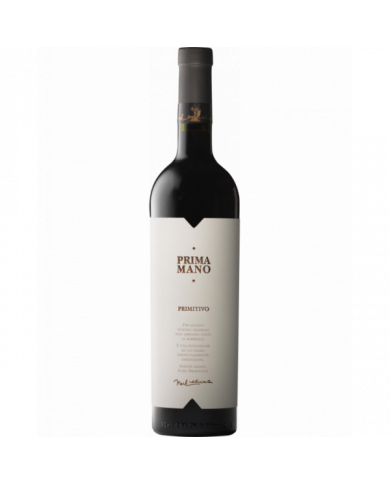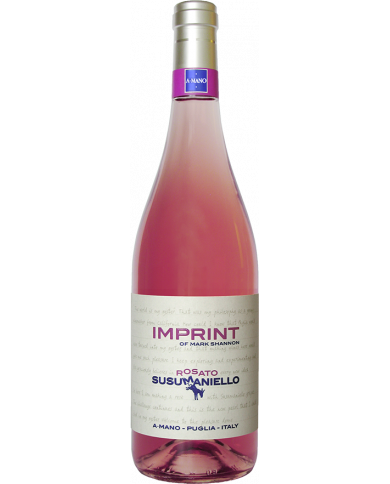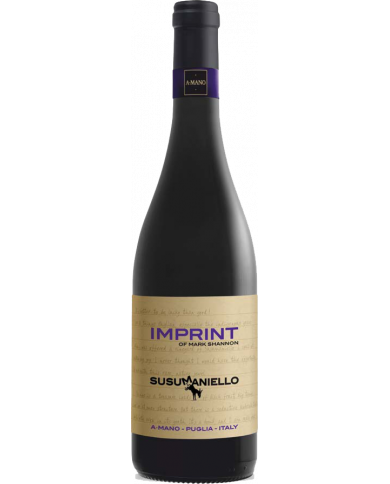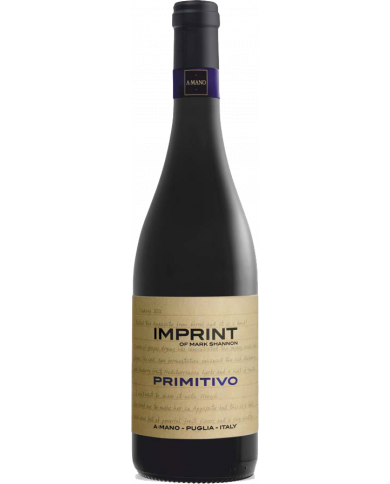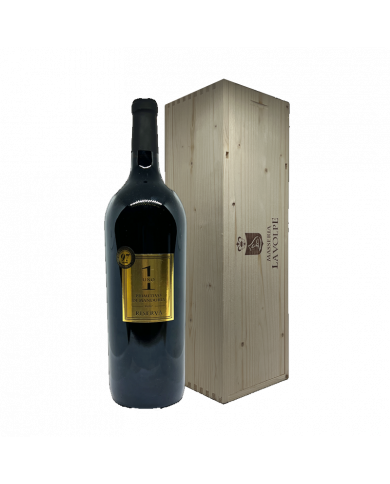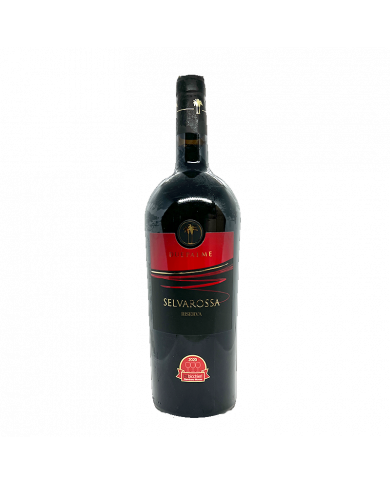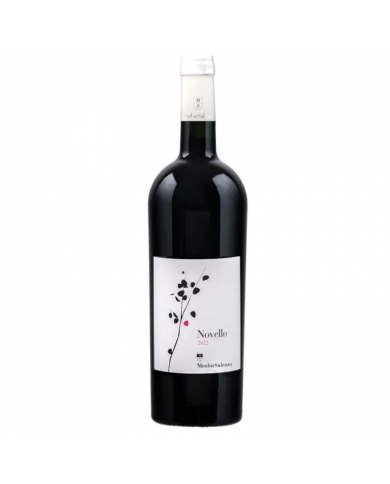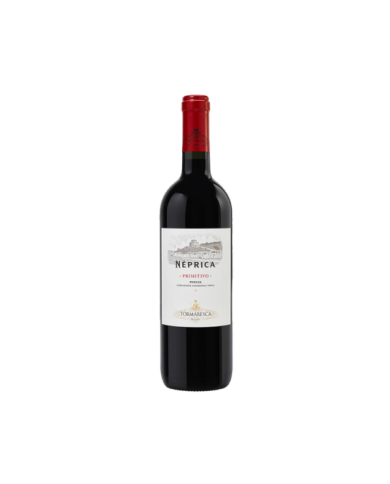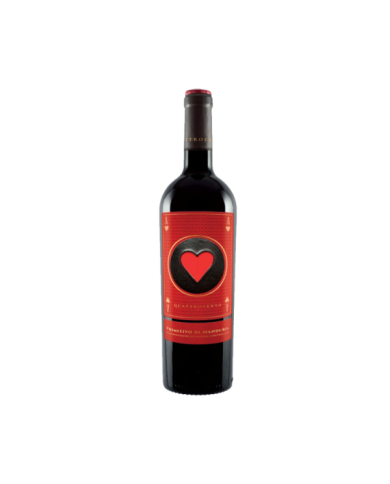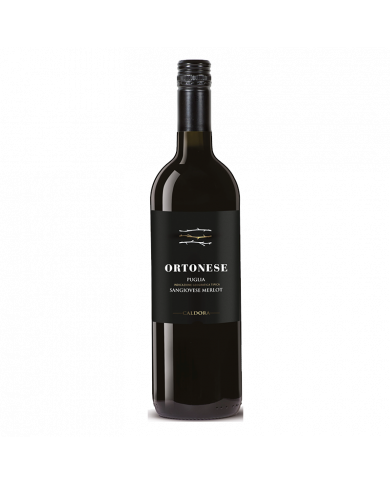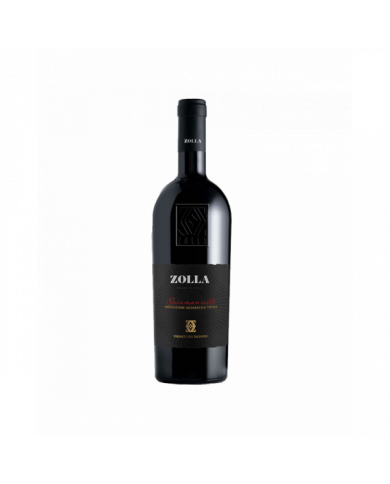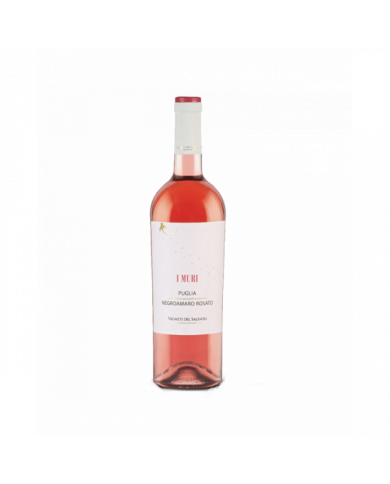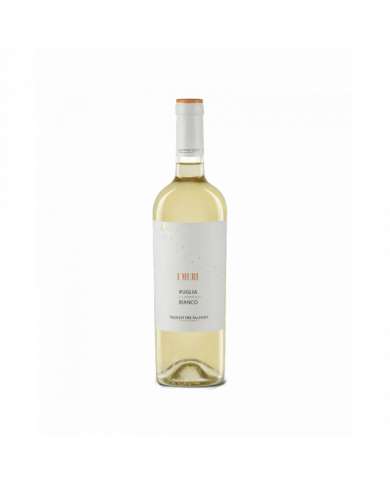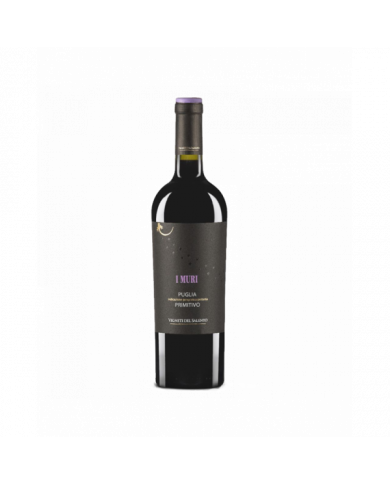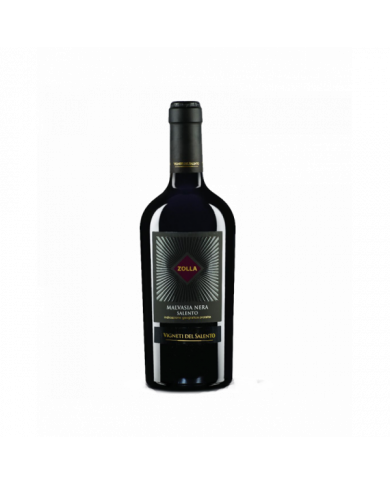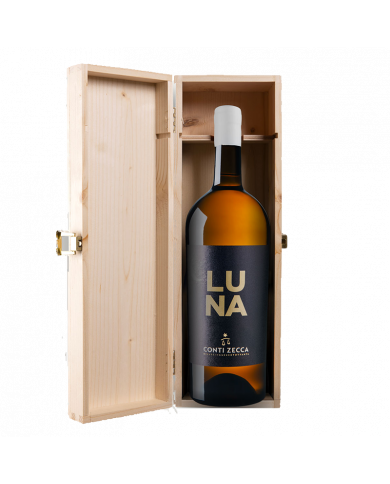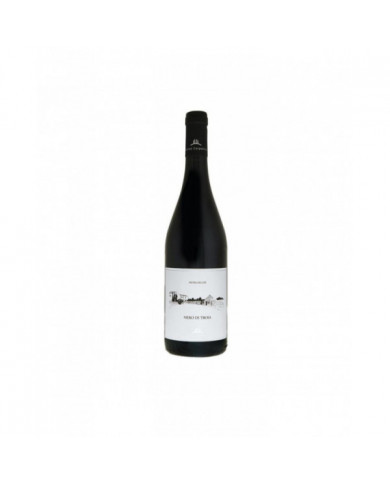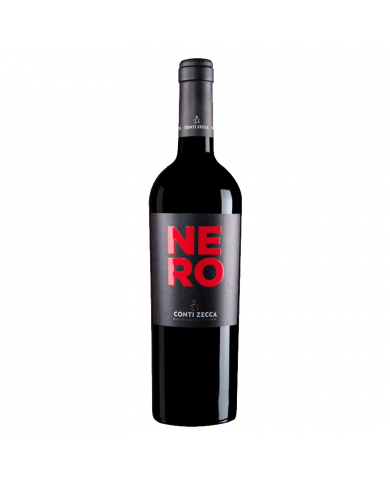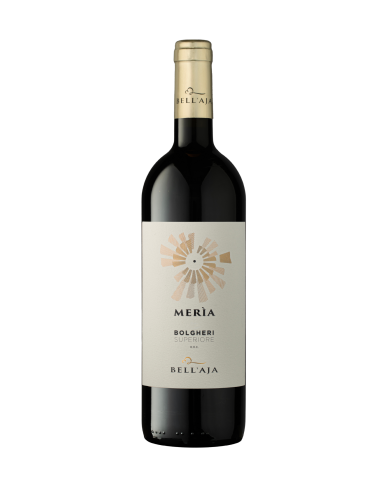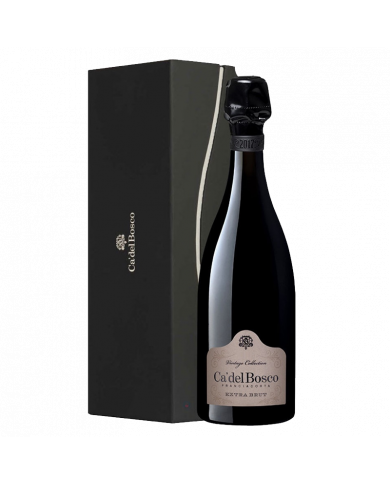Parchitello is a ros├® wine vinified from 100% Bombino Nero, a historic vine for the production of ros├® wines only. Pale ruby red colour, bouquet of red fruits reminiscent of pomegranate and yellow pulp fruits. Pleasant fresh and balanced in the mouth.
Almagia by Giancarlo Ceci is a natural red wine with zero sulphites, Demeter certified from organic and biodynamic agriculture.
Panascio by Giancarlo Ceci is a Castel del Monte DOC organic white wine produced from the single-variety vinification of white bombino grapes. It fully expresses the typicality of the soil and the grape variety, to be drunk young.
At sight it is ruby red. The nose is expressed with fruity notes of ripe red fruit, floral notes and sweet spices. On the palate it is soft, with an excellent balance between the tannic and acid components and a good persistence
Biancardi's Insolito is a straw yellow wine. Floral, fruity and aromatic. Soft, with pleasant acidity and good persistence
At sight it is straw yellow. The nose is expressed with pleasant and fine floral aromas. On the palate it is fresh and with a characteristic harmonious flavour.
Michael Biancardi. "Here, in Daunia, wine has always been made and my cellar is just one of the many examples of a glorious past in the area
Production area: Manduria and Sava, Apulia Grape variety and vinification: Primitivo di Manduria. Temperature-controlled maceration for 8-10 days with periodic pumping over. Devatting and malolactic fermentation in steel. Maturation in French and American oak barrels for the following 6-8 months. Colour and pairing: Red. Excellent with structured first courses and lamb, with game and sauces and hard cheeses.
Audarya Monica is produced from monica grapes only, from sapling vineyards located on clayey-calcareous soils in the countryside
The name of this wine symbolizes the Dodec├Āpoli Messapica. As well as the ancient Etruscan Dodecapoli and that of Ionia included twelve cities, all located in the current Salento: Alezio, Ugento, Brindisi, Vereto, Otranto, Ceglie Messapica, Manduria, Mesagne, Nard├▓, Oria, Cavallino, Roca. The twelve autonomous city-states were a real political-military organization with its own king and its own laws, but they all belonged to the Messapian civilization. Almost all of them were surrounded by walls and dominated by the acropolis where the palaces, the temples of the deities and the agora, the people's square, the market and the meeting squares stood and also included the surrounding area with the villages, the military outposts and ports, in addition to the countryside destined for cultivation and grazing. Luca Attanasio Dodecapolis Primitivo is a wine with an intense red color. The nose is characterized by intense and complex aromas of ripe berries and plums. In the mouth it is rich, warm, deep, with enveloping fruity aromas, with a great structure. Good tannins and balanced freshness with a great final persistence.
The color is intense claret pink. The scent is fragrant, ample, of wild blackberry, pear and citrus. On the palate the wine is fresh, sapid and balanced by fruity notes. The grape harvest began in the second week of August. The maceration process of the bunches was completed within 10 hours of harvesting. The fermentation took place at low temperatures for about 20 days.
The Negroamaro grape has always fascinated us with its elegance. The longevity of a Negroamaro wine is comparable to that of the great Piedmontese or Tuscan wines. This is our most sublime version
We've worked with Falanghina in small batches in previous years and felt it had a special character and presence: notes of orange blossom and a serious, lingering mouthfeel. A dear friend of ours offered us a beautiful old vineyard of organically grown Falanghina this year and we jumped at the chance to offer a new, beautiful white wine to the family.
Graticciaia Agricole Vallone 2016 Magnum 1,5 lt. in wooden case: it is an Apulian red wine born from Negroamaro grapes only and aged for 26 months in steel and 12 in barrique. It manifests itself to the eye with a bright garnet red color. The scent is rich, intense and very complex with notes of blackberries, plums, dried flowers, humus and sweet spices. In the mouth it is intense, round and austere, with rich aromas, notes of licorice and vigorous tannins. PAIRINGS: red meats, game, aged cheeses. SERVING TEMPERATURE: 18-20┬░ C.
White raisin wine, Capable of bringing wisdom and meditation even to those who, by the hand of fate, do not have it. The sensation of fullness on the palate is accompanied by a vertical sensation of freshness. Our favourite.
It often happens to think of the illustrious personalities who preceded us as owners of the estate; from Raimondo del Balzo Orsini, Prince of Taranto, owner of the estate from 1382 to 1407, to Queen Maria d'Enghein, Countess of Lecce, owner from 1407 to 1464. Please refer to the dedicated section for further historical notes on Serranova Castle. The intense red of the lands reveals a first clue about the oenological orientation of the wines of the estate. This is the place where you can glimpse the characterizing elements of Vallone; the noble soul of the wines, the innovative soul that led to the conception of the production technique of the Graticciaia; the soul that embraces the harmony and beauty generated by the union between the historicity of places and nature. Castel Serranova is a Cru whose grapes come from a vineyard surrounded by dry stone walls aimed at demarcating the threshold between the dynamism of the different elements of the surrounding nature reserve and the placid succession of the seasons which will lead the grapes to ripen. The vineyard, called Vigna Castello, is the origin of the most classic of the Salento blends, namely Negroamaro and Susumaniello with the predominance of the latter. Aged in dedicated French oak tonneaux for 12 months. Notes of leather, spices and Mediterranean scrub follow each other seamlessly in this long-lived wine.
DOCR is the attention that Vallone dedicates to the two most representative denominations of controlled origin of the territory. It is a long journey; 24 months of passion. Both reserves are elevated in wood for six months. Vereto is the name of our Negroamaro vineyard located on the Iore estate in San Pancrazio Salentino. The soft and silky tannin is an unequivocal declaration of origin of the pure Negroamaro.
Flaminio is the interpretation that the Vallone family gives to native vineyards. The line takes its name from the historic Flaminio vineyards from which they are produced and which stand on an ancient Messapian settlement on the outskirts of San Pietro Vernotico. It is our ever-evolving tradition. Intense colors and fruity aromas. Vine as generous as it is approximate at a young age due to its productive exuberance. As it matures, the overabundance of production suddenly disappears, giving way to grapes capable of expressing olfactory complexity with notes of leather and Mediterranean scrub.
Born from an intuition that brings to light an ancient technique that links past traditions to future visions. The experiment of drying the Negroamaro grapes from the 'Caragnuli' Cru, an 80-year-old Apulian sapling vineyard located in San Pancrazio Salento, began in 1980, thanks to the insistence of the oenologist Severino Garofano who had always believed in versatility and nobility of this vine. In 1986, after 6 years of trying, the first vintage of 'Graticciaia' saw the light. The rest is a success story that gives the dignity that belongs to Negroamaro. After a careful selection of the grapes, we proceed with a light drying, followed by an aging of 12 months in French oak barriques, the last mile is covered in concrete until bottling.
The line takes its name from the Adriatic side, where the Vallone vineyards extend. The Typical colors of the Adriatic coast composed of the intense blue of the sea and the continuous alternation of the green-gold of the olive leaves moved by the wind. Here in these few words the spirit of the Walloon slope is enclosed. Maintaining its peculiar elegance and minerality, it has acquired body and fruit from our Salento peninsula. International vine present in our company since the early 90s. He loves to be accompanied by seafood dishes, wanting a nice Poke Ball!
The line takes its name from the Adriatic side, where the Vallone vineyards extend. The Typical colors of the Adriatic coast composed of the intense blue of the sea and the continuous alternation of the green-gold of the olive leaves moved by the wind. Here in these few words the spirit of the Walloon slope is enclosed. Unmistakable dark red with violet reflections, from the trendiest vine of Puglia, an enveloping wine that is easy to approach.
Flaminio is the interpretation that the Vallone family gives to native vineyards. The line takes its name from the historic Flaminio vineyards from which they are produced and which stand on an ancient Messapian settlement on the outskirts of San Pietro Vernotico. It is our ever-evolving tradition. Intense colors and fruity aromas.
Flaminio is the interpretation that the Vallone family gives to native vineyards. The line takes its name from the historic Flaminio vineyards from which they are produced and which stand on an ancient Messapian settlement on the outskirts of San Pietro Vernotico. It is our ever-evolving tradition. Intense colors and fruity aromas.
The appellative Vigna, authorized by the competent bodies, in front of the name Flaminio indicates the real correspondence of the area and therefore of the vineyard from which the grapes of our Brindisi DOC come. This is the first Brindisi DOC ever produced, it was in 1972.
A Mano Fiano ŌĆō Greco is the most unusual wine you will try in Puglia, perhaps in all of Italy. The slightly dried Fiano Minutolo gives the blend the scent of white peach and the floral component. The Greco comes from an old vineyard, not irrigated, located on a hill with sandy soil, adds body and citrus notes. It is a fresh and delicious aperitif. The scent is "Nordic", the body is full, of great satisfaction with a fresh and pleasant acidity.
I get up very early and leave in the dark. I'm going to the vineyard. Sometimes I say where, sometimes it remains a secret. The mornings I go to Vigneto Prima Mano I want to be alone. There are sensual moments in life, for me one of these is being in the vineyard by the sea in the first moments of dawn and smelling the sea in the air together with the scent of fruit. Everything is silent. Only the vineyard speaks. He tells me to wait a couple more days. Not more. My wine is made when the vines speak to me and I know how to listen. There are very few wines in the world that are so complex, with this extract yet soft and elegant.
Embracing new winemaking challenges has always been in Mark's DNA. And making wine from Susumaniello grapes in ros├® is certainly an intriguing challenge. It will envelop all the senses, from sight to smell, from taste to hearingŌĆ” (you will hear a playful chirping after the second sip) Have fun.
Susumaniello is an ancient and rare grape of the Salento peninsula. In Salento dialect Susumaniello means "Little Black Donkey". The old farmers say that it derives from the habit of the vineyards to load themselves with grapes, others argue it is due to the stubborn character and the reluctance to be tamed. Finally a grape and a winemaker with the same personality! This is a wine as radiant as its land, a wine that speaks the language of the people here.
Wine produced with Primitivo grapes grown in the province of Taranto. Manual harvest at the right maturation with careful selection of the grapes. Manual sorting of the bunch with selector belt. Fermentation of the must at controlled temperature, traditional maceration for 20-25 days, good use of delestage and pumping over. Carrying out of the malolactic fermentation in barriques at a controlled temperature, with the use of batonnage. 12 months of aging in French oak barriques. 2-3 months of aging in the bottle.
Intense ruby red wine with amaranth reflections. The nose presents captivating fruits of cherry jam and dates, notes of vanilla and licorice. The palate is marked by hints of small red fruits, juicy and ripe, and by the sweet nuances of wood. Warm and with a good fragrance, with gritty and pleasant tannins. Perfect as a meditation andŌĆ” conversation wine!
If you love autumn, its colors, its scents, and are waiting for this season to enjoy the freshness and fragrance of the new wine together with chestnuts, as the most classic of traditions dictates, we invite you to taste the Novello Negroamaro Salento IGT by Menhir Salento, a fresh, soft and slightly tannic red wine, given the particular vinification process. Light, fruity, vinous, it is extremely pleasant and easy to drink, and goes very well with cured meats, stewed meats and mushroom-based dishes.
Vivid ruby red and purple reflections, almost impenetrable, optimal consistency
Aperitifs, Excellent with appetizers, vegetarian foods, red meats and aged cheeses.
Primitivo Neprica by Tormaresca Antinori is a puliese red wine from the province of Brindisi, aged in steel for about 8 months to maintain a fragrant and fruity sensorial profile. It has an intense ruby red color, furrowed by purple reflections, and releases notes of black cherries, small fresh and candied red fruits and licorice aromas to the nose, revealing a soft, round sip with evolved tannins, awakened by a balanced freshness .
Primitivo Neprica by Tormaresca Antinori is a puliese red wine from the province of Brindisi, aged in steel for about 8 months to maintain a fragrant and fruity sensorial profile. It has an intense ruby red color, furrowed by purple reflections, and releases notes of black cherries, small fresh and candied red fruits and licorice aromas to the nose, revealing a soft, round sip with evolved tannins, awakened by a balanced freshness .
Character, personality and qualitative potential are the characteristics that the Puglean territory transmits to the indigenous and non-indigenous varieties that are cultivated there. This is why the Antinori family's investments in Puglia began in 1998, which considered this region among the most promising in Italy for the production of quality wines, with a strong territorial identity.
The only red to drink cold. Tradition and modernity in a single bottle.
The name of our wine, unique in its kind as a red "to be drunk cold", is closely linked to the territory where it is born, Salento, called in ancient times "The garden of Italy" for the richness and variety of its fruits. In fact, this wine owes its name to one of the most delicious fruits that grow in this area: the fig variety which is characterized by its purplish-red color so intense as to approach black (ŌĆ£moroŌĆØ in dialect).
ensational, enveloping, powerful and rustic, but at the same time capable of telling the story of the Salento area. The Sun, the beneficial influence of the sea and the wind. The classification is the classic one, Negroamaro IGT. Produced with 100% pure Negr or amaro grapes, conscientiously selected in the Maìme estate in S. Pietro Vernotico in Brindisi, where they are still raised as they once did in these areas, using the sapling and spurred cordon system.
very deep ruby red, ample bouquet of ripe fruit with hints of plums and cherry jam and spicy notes. Delicate and balanced on the palate.
intense ruby red with violet reflections; aroma of ripe fruit and spicy notes; balanced and delicate vinoflavor
Production area: Province of Taranto Grape variety and vinification: 100% Primitivo. The vinification is carried out using the traditional submerged cap system, carefully controlled to extract delicate tannins and varietal characteristics of the fruit. During the maturation phase in steel tanks and wine bottles, these evolve to reach the highest possible levels. Maceration lasts 12-15 days at controlled temperatures not exceeding 28 ┬░ C. Color and combination: Red. Excellent with savory first courses, red meats and aged cheeses.
Production area: Manduria and Sava, Apulia Grape variety and vinification: Primitivo di Manduria. Temperature-controlled maceration for 8-10 days with periodic pumping over. Devatting and malolactic fermentation in steel. Maturation in French and American oak barrels for the following 6-8 months. Colour and pairing: Red. Excellent with structured first courses and lamb, with game and sauces and hard cheeses.
Wine produced from Fiano grapes grown on calcareous and clayey soils, harvested manually at the right ripeness with careful selection of the bunches. Traditional vinification with soft pressing, fermentation at a controlled temperature of 16┬░C and brief rest on the fine lees.
Wine produced with Primitivo del Salento grapes. Manual harvest at the right maturation with careful selection of the grapes. Traditional maceration for 8-10 days and fermentation of the must at a controlled temperature of 20┬░C, constant use of pumping over and delestage. Malolactic fermentation in steel. Six months of aging in French oak barriques. 2-3 months of aging in the bottle.
Wine produced from Negroamaro grapes grown in the area of Salice Salentino and other municipalities in the province of Lecce and Brindisi. Manual harvest at the right maturation with careful selection of the grapes. Manual sorting of the bunch with a selection belt, fermentation of the must at a controlled temperature, traditional maceration for 20-25 days, good use of delestage and pumping over. Carrying out of the malolactic fermentation in barriques at a controlled temperature, with the use of batonnage. 12 months of aging in French oak barriques. 2-3 months of aging in the bottle.
Wine produced from Negroamaro grapes grown in the provinces of Lecce and Brindisi. Manual harvest at the right maturation with careful selection of the grapes. Traditional maceration for 10-12 days and fermentation of the must at a controlled temperature, good use of pumping over and delestage. Six months of aging in French oak barriques. 2-3 months of aging in the bottle.
- Production area: Province of Brindisi Puglia
- Grape variety: Susumaniello
- Color: Red
- Serving temperature: 16-18 ┬░ C
Cantalupi Negroamaro is characterized by an intense ruby red color, tending to take on pleasant garnet reflections with aging. It has an intense fruit aroma with spicy notes. On the palate it releases a velvety, harmonious, rightly tannic flavor. To be served at a temperature of 18 ┬░ C.
As if by magic it is a surprising wine obtained from the white vinification of Uva di Troia. It is a complex and decisive wine while retaining an elegant freshness. Its enchanting aromatic richness ranges from citrus notes to those of wild blackberry, from hints of quince to those of icing sugar with marked sensations of honey. Pulpy and mineral.
Since the time of Frederick II, falcons have been hunted on the hills of Castel del Monte. In these lands, among luxuriant vines, the lesser kestrel finds its natural habitat, a rare species of bird of prey that bears witness to an unchanged nature. A skilful blend of Nero di Troia and Merlot grapes. Ruby red in color with violet reflections, it is fresh and fruity. Balanced and persistent. Elegant with hints of blackberry and black cherry, small red fruits and balsamic and vanilla notes. The taste is refined, rightly tannic and structured.
Ancient construction in dry stone, the Jazzo defended the herds and shepherds from the nocturnal attack of the wolves, preventing the climbing over of the fences with its overhanging stones, called Stones of the Wolves or Paralupi. Still today an intact Jazzo watches over the vineyards from which we have selected Pietra dei Lupi, obtained from the vinification of 100% Uva di Troia. A wine of great elegance and freshness, its tannins refine in 7.5 HL Slavonian oak tonneaux.
In this wine the ancient values of a peasant world are preserved in which the transhumance of the herds marked the passing of the seasons. The life of the people flowed along the tratturo. Austere wine obtained from the vinification of 100% Troia grapes, aged in large 26 Hl Slavonian oak barrels for at least twenty-four months, preserving, together with the typical body and structure of the variety, a great freshness and drinkability.
Cantalupi Negroamaro is characterized by an intense ruby red color, tending to take on pleasant garnet reflections with aging. It has an intense fruit aroma with spicy notes. On the palate it releases a velvety, harmonious, rightly tannic flavor. To be served at a temperature of 18 ┬░ C.
The "Cantalupi" Rosso Salice Salentino from the Conti Zecca winery is a full-bodied and elegant red wine with an intense ruby color. On the nose emerge aromas of ripe fruit such as blackberries and plums, and hints of spices. Harmonious, velvety and rightly tannic flavour. It ages for a few months in concrete tanks before being bottled.
In the wide and varied range of labels of the Conti Zecca winery, the wines made with native single grape varieties stand out for importance and interest. The company is investing considerable energy in this direction.
This wine takes its name from an underground hiding place, where the locals found shelter during dangerous situations. The entire farm took on the name of Rifugio, which today is a particularly suitable area for the cultivation of fine Primitivo grapes.
This simple and intense Salento Rosato PGI "Venus" of the Conti Zecca is made from 70% Negroamaro grapes and the remainder from complementary vines and is born in the municipality of Leverano, in the heart of Salento. It takes its name from the planet Venus and the goddess of love, beauty and pleasure.
Every year the "Nero" of the Conti Zecca winery reaches the "finals" in the judgments of the most renowned wine guides, obtaining scores that, if they do not exceed 90 cents, are punctually very close. This year too is no exception. It is a wine that follows a long aging: it ages 18 months in French wooden barriques, one year in large oak barrels and six months in bottle.
The Aglianico Salento PGI "Terra" from the Conti Zecca winery is a ruby red wine. Notes of wild berries, tobacco and vanilla emerge on the nose. The flavor is enveloping and harmonious with soft tannins. Before being bottled, it is aged in barriques and oak barrels.
Discover the secrets of the wines of Puglia: A definitive guide
Puglia is an Italian region of great beauty and its hills that are home to vineyards are a sight to behold. Puglia is also a popular destination for food and wine tourism, thanks to its rich tradition of winemaking. If you are interested in discovering the secrets of Puglia's wines, this guide is a great starting point.
The Wine of Puglia
Puglia is a region that has a rich history of wine production, with varieties dating back to Magna Graecia times. The wines of Puglia are famed for their complexity, with flavors ranging from fresh and fruity to rich and full-bodied. The region is home to some of Italy's most important grape varieties, including Primitivo, Nero di Troia, Susumaniello, Bombino Nero and Malvasia Nera.
Primitive
Primitivo is one of Puglia's most popular grape varieties and is known for its rich, complex and intense flavours. Primitivo wines are generally intense ruby red in colour, with aromas of ripe berries, such as currants, blueberries, blackberries and cherries, together with notes of spice and light hints of tobacco. On the palate, Primitivo is generally full-bodied and intense, with good acidity and soft tannins.
Black of Troy
Nero di Troia is a native red grape variety of the region that has a complex aromatic profile and is considered one of the best red wines of Puglia. Nero di Troia wines tend to have a deep ruby red colour, with aromas of ripe fruit, such as cherries and blackberries, along with notes of spice and tobacco. On the palate, they have a good structure, with soft and balanced tannins, and a lingering finish.
Susumaniello
Susumaniello is a native red grape variety of Puglia that has become popular in the last decade. The wines produced from this variety are generally intense ruby red in colour, with aromas of ripe fruit, such as cherries, together with notes of spices, tobacco and wood. On the palate, they have good structure, with soft tannins and a lingering finish.
Bombino Black
Bombino Nero is a native black grape variety of Puglia. The wines produced from this variety have an intense ruby red colour, with aromas of ripe fruit, such as blackberries and cherries, together with notes of spices and tobacco. On the palate, they have a good structure, with soft and balanced tannins, and a lingering finish.
Black Malvasia
Malvasia Nera is a native black grape variety of Puglia and its production is limited. The wines produced from this variety have an intense ruby red colour, with aromas of ripe fruit, such as cherries and blueberries, together with notes of spices and tobacco. On the palate, they have a good structure, with soft and balanced tannins, and a lingering finish.
How to taste the wines of Puglia
To fully appreciate the wines of Puglia, it is important to know the correct tasting techniques. Wine tasting begins with the evaluation of the appearance, with the observation of the color, clarity and saturation of the wine. Once the aspect has been evaluated, it is possible to begin evaluating the aroma of the wine, observing its intensity and complexity.
Finally, we move on to the wine tasting, which begins with tasting the wine in the mouth, noting the structure, acidity, tannins and body. By tasting the wine, it should be possible to identify the complexity and flavors of the wine. After tasting, it is possible to evaluate the persistence of the wine, noting how long the flavors remain after drinking.
Discover the main denominations of Apulian wines: guide to the flavors of southern Italy
Puglia, a land of sun, sea and lush vines, offers a variety of high quality wines thanks to its Mediterranean climate and fertile soil. In this guide, we will explore the main denominations of Apulian wines and discover their unique aromas and flavours.
Primitivo di Manduria DOC: the king of Apulian red wines
Primitivo di Manduria DOC is a full-bodied and intense red wine, mainly produced with Primitivo grapes in the Manduria area, in the province of Taranto. Characterized by flavors of ripe fruit, spices and chocolate, this wine is perfect to accompany meat dishes and aged cheeses.
Negroamaro del Salento IGP: the soul of Salento in a glass
Negroamaro del Salento PGI is a wine produced with the native Negroamaro vine, grown throughout the Salento area. The red and ros├® wines of this appellation have aromas of red fruits, herbs and spices, ideal for accompanying dishes based on fish and vegetables.
Salice Salentino DOC: balance and tradition
Located in the heart of Salento, Salice Salentino DOC produces Negroamaro-based red wines, often in combination with other grapes such as Malvasia Nera. The wines of this appellation stand out for their good structure, soft tannins and flavors of red fruit and spices, perfect for accompanying pasta dishes and red meats.
Castel del Monte DOC: a variety of flavors in a unique territory
The Castel del Monte DOC denomination, located in the northern part of Puglia, produces white, red and ros├® wines using grape varieties such as Bombino Bianco, Nero di Troia and Aleatico. These wines offer a wide range of aromas and flavours, suitable for any occasion and gastronomic combination.
Puglia is a region rich in wine denominations offering a wide range of high quality wines. Exploring the main denominations of Apulian wines is a fascinating journey


